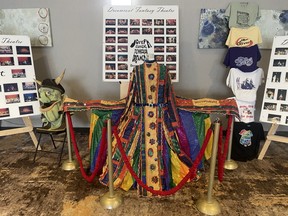Nature photography creates a civil corner on Nextdoor

Table of Contents
But scroll just long enough and look!, a mesmerizing photo of hummingbirds in action. And, whoa!, close-ups of elusive hawks. Videos of intrepid, clever foxes. Intimate scenes of bees getting busy in the flowers.
Nextdoor sites across the country have become private showcases of stunning nature photography as amateur photographers give the platform the vibe shift it so desperately needs. The power of flowers — and nature in general — became more prevalent during the pandemic, when mental health walks and socially distanced outings led to an uptick in nature photography on the site, says Jennie Sager, Nextdoor’s global head of brand marketing and managing director.
Nextdoor created its first #LoveYourNeighborhood contest in Australia in 2021, in the middle of one of the world’s strictest lockdowns. The contest, which invites users to share photos of their neighborhoods, went global in 2022.
“Depression and loneliness rates were skyrocketing globally during covid lockdowns, and we wanted to give people a reason to share the joy in their local community and remember the good things that exist in their own backyards,” Sager wrote in an email.
The photos seem to be resonating with users: Love Your Neighborhood posts received, on average, nearly three times as many reactions than non-Love Your Neighborhood posts during the 2023 photography contest, according to Nextdoor.
Enough studies to fill a forest have shown that exposure to nature has mental and physical benefits, acting as a palate cleanser to our busy brains and a jolt to sedentary bodies.
Scientists are studying whether looking at photos of nature can deliver similar rewards. In a small study of 46 students in the Netherlands, researchers found that after a stressful event, just five minutes of looking at images of green spaces — compared to looking at photos of urban settings — lowered heart rates and had other benefits to participants’ stress responses. Other studies have been less conclusive.
Anecdotally, though, the neighbors sharing local nature shots in my Northern Virginia Nextdoor community consistently make me feel better about our digital and physical surroundings.
They post often, sharing photography tips (“avoid shooting in the middle of the day — the worst light on earth!” says Paul Derby in Falls Church); nature lessons (crows can signal a lurking fox!); and sincere responses to almost every comment. I recently spoke with four nature photographers from my local Nextdoor about how they brighten their little corner of the internet.
Bob Kovacs, Annandale, Va.
· Feed Flavor: Videos of foxes, birds, sunsets and the occasional “spotted on the curb.”
· Equipment: Three trail cameras, two Victures, one Meidase P90 and four Panasonic Lumix cameras — including his camera of choice, the GH6.
Bob Kovacs, who was a contract video producer for the National Science Foundation until he retired in 2022, is a “lead,” or quasi-moderator, on Nextdoor, reviewing posts that have been flagged as offensive and voting on what actions to take (removal, etc.). But Kovacs said he didn’t want to be just a glorified online hall monitor.
“Online, the word ‘lead’ is next to my name. So I started thinking: I don’t want to just react, because that’s not really leading. Why don’t I try to actually lead?” Kovacs says. “I decided to post pictures and videos about the world around me. Turns out that people really like it, you know, they respond. And that response kind of keeps me going. It appeals to my ego in such a way that, I’m like, ‘Oh, I gotta do more of this!’”
His quirky sense of humor, seen most recently in a shot of him lying on a couch thrown to the curb, is complemented by his wife Mary Ellen Dawley’s Photoshop skills, which she uses to jazz up (i.e.,., meme-ify) posts. For example, a serene shot of a bird in a bird bath got a dose of whimsy when Dawley added a surfboard and white caps.
Paul Derby, Falls Church, Va.
· Feed Flavor: Hawks, close-ups of flowers, dogs and the sky.
· Equipment: iPhone, Nikon D5.
Derby realized his lifelong dream of becoming a photojournalist in college when he captured a soldier embracing his young wife and toddler on his return to the United States from the Vietnam War for the Daily Oklahoman.
He didn’t pursue the profession, but calls himself an “avid photography hobbyist.”
Derby says things can get dicey on Nextdoor, with the politics and negativity. He considers his posts a needed antidote to the squabbling — and encourages his neighbors to take a similar view. “Some of my posts will say, ‘If you’re tired of hearing complaints, look at this, what this animal did and or how that flower bloomed,’” he says. “I’ve been trying to make people feel good instead of just wailing about all the negativity that’s on there.”
While Derby has fancy equipment, he takes most shots with his phone. “My preferred camera is the one I have with me!” he says. “Photo opportunities present themselves all the time. All the cameras are good now — it’s hard to find a bad one.”
It’s not hard, however, to take a bad photo. Derby has tips: If you’re going to take pictures of flowers during the middle of the day, find ones underneath shady trees. As long as you don’t have sky in the picture, you can get very saturated colors if you cut down the contrast. And if you’re standing near a fence or light post, prop your phone or camera against it to get rid of the jitters.
· Feed flavor: Foxes and more foxes, hummingbirds and the occasional coyote
· Equipment: Canon R5 and Canon 100-500 millimeter lens.
The stuck at home-ness of the pandemic sent Robert Kirk looking for an escape. He found it in his backyard and nearby Kent Gardens Park. He had recently retired and his plans for travel were on indefinite hold, so Kirk decided to sharpen his burgeoning digital photography skills and get more familiar with his neighborhood.
He found that nature was also getting more familiar with him. Foxes, in particular, were boldly venturing into his yard and denning under the homes of his neighbors. Birds were clamoring for his feeder like so many tourists outside Georgetown Cupcake.
“It felt like they knew my house was a little nature studio, like an outdoor Olan Mills for the animals,” he says, noting that 90 percent of his photography happens from his deck. When he does try to hide in the garage or attempt any stealth angle to catch subjects slinking by, he rarely succeeds. “Hiding in my garage, waiting for this fox, I take one breath and he or she turns to look right at me!”
Since he began shooting and posting, Kirk has set out to learn more about the natural word around him. His wife often acts as a spotter on road trips to Delaware, finding blue herons, egrets and the like so they can pull over.
“Back when I was working, I just thought all birds around here were different sized sparrows!” he says. Now he’s studying migration patterns, the feeding habits of dragonflies and how several cawing crows may signal a fox in the area. “Just the other day, I heard the crows making a racket, grabbed my phone and went outside. It was a cat,” he says. “They can’t all be National Geographic.”
Thanh Huong Truong, Fairfax, Va.
· Feed Flavor: Hummingbirds, bumble bees and butterflies.
· Equipment: Nikon Z7, 100-200 lens.
In 2018, a friend asked Thanh Huong Truong to bring a camera on a trip to Europe. “After that, it just sat in my Nikon bag for a couple years because I was lazy and just taking photos with my iPhone,” she says. “I got a day off and was sitting on my deck, and saw a couple bumblebees and butterflies flying over my flowers, trying to get some nectar. They looked attractive to me so I told myself: ‘This is a chance’ … I took a couple shots, and they turned out [to be] great photos!”
She moved on from the bees to the birds, as they’re more abundant in her studio (i.e., backyard). Troung gets most of her bird shots in the early morning, before work, when they’re most active.
Recently, she’s pointed her lens beyond the backyard, exploring the C&O Canal to capture blue herons and egrets catching dinner from the Potomac.
She doesn’t track views or reactions, or pick and choose subject matter accordingly, but she does reply often to comments. “Of course, more viewers inspire me to work hard on photography and enjoy it more, but number of viewers are not necessarily important. What I like is not always what people like.” she says. Her motivation isn’t as much about pleasing the crowd, but giving herself something to hold on to when she wants to recall a fleeting, beautiful moment.
“After all, we take pictures to keep memories, so we can go back in time to review,” Truong says.
Amanda Long is a writer and massage therapist living in Falls Church, Va.








